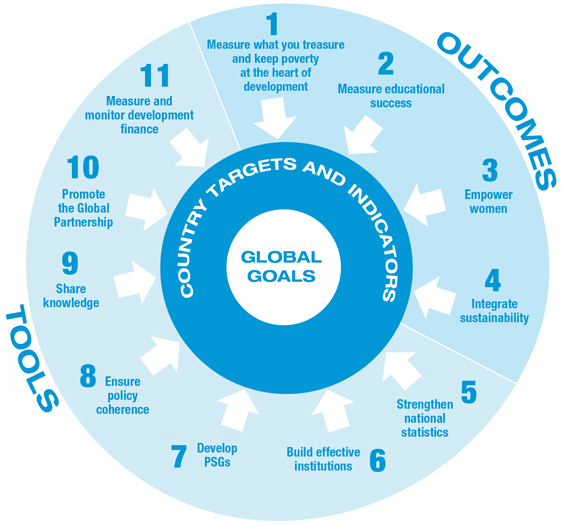OECD and Post-2015 Reflections: Gender Equality
Wikis > OECD and Post-2015 Reflections: Gender Equality
In addition to increasing its efforts to support the achievement of the Millennium Development Goals , the Organisation for Economic Co-operation and Development is also thinking about how it can help the United Nations in developing a new agenda and framework post-2015. The OECD has a number of areas of expertise which could play an important role in shaping this post-2015 agenda and framework.
In shaping the post-2015 era, the OECD initially proposes 11 elements organised into two categories:
- Outcomes, including principles and underlying future goals; and
- Tools for achieving existing and developing future goals
Focus on Element 3: Empower Women
Gender equality and women’s rights in the post-2015 agenda
The first paper of Element 3 is on “Gender equality and women’s rights in the post-2015 agenda: A foundation for sustainable development”.
Millennium Development Goal 3 – “to promote gender equality and empower women” – signaled global recognition that this is both an important development goal in itself, and a key to the success of all the other goals. Gender equality and women’s rights are key to addressing the unfinished business of the Millennium Development Goals (MDGs) and accelerating global development beyond 2015. A strong post-2015 framework will take a holistic view of gender inequalities.
Key messages
- Gender equality and women’s rights are key to addressing the unfinished business of the Millennium Development Goals (MDGs) and accelerating global development beyond 2015. Gender equality matters in its own right, and as a prerequisite for the health and development of families and societies, and a driver of economic growth
- The post-2015 framework should 1) retain a strong, stand-alone goal on gender equality and women’s empowerment, as recommended by the UN High Level Panel on the Post-2015 Development Agenda (HLP); and 2) include gender-specific targets and indicators in the other goals
- A strong post-2015 framework will take a holistic view of gender inequalities: 1) addressing girls’ completion of a quality education, 2) women’s economic empowerment, 3) universal access to sexual and reproductive health and rights, 4) ending violence against women and girls, *Women’s voice, leadership and influence, 6) women’s participation in peace and security, and 7)Women’s contributions to environmental sustainability
- The new framework will need to confront the discriminatory social norms and practices that underlie gender inequality, such as early marriage or tolerance of violence against women.
- Targets and indicators on gender equality act as a powerful stimulus for action. When girls and women are visible in data collection and reporting, governments and donors invest more in gender equality. There is an urgent need for ongoing investment in statistical capacity building and monitoring to improve the measurement of gender equality indicators and the collection of data disaggregated by sex.
References
See also
- Unfinished business – Women and girls front and centre beyond 2015 (May 2013)
- Network on Gender Equality/GENDERNET
- 2009 Social Institutions and Gender Index 2012



